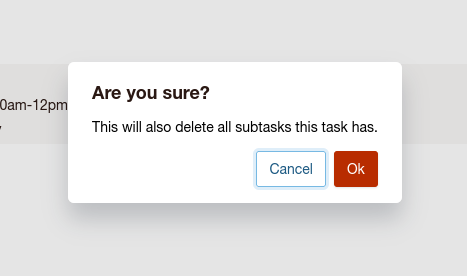As I use webcomponents more, I found myself wanting a way to define the HTML for webcomponents with a non-trivial amount of light DOM contents in a more reusable programatic way. So far, I’ve found that modelling webcomponents as template fragments is a reasonably ergonomic solution. It enables usage such as:
When re-building docket with htmx, I wanted to retain the confirm dialog experience I had with react. Instead of taking on a dependency for this, I chose to build my own combining HTMX and Webcomponents. The resulting UX feels snappy and similar to a client rendered experience. My end result looks like this:

I wanted to share a CSS and webcomponent layout that I’ve been pretty happy with in a few projects. With webcomponents now widely supported, I was able to remove one of the last bit of inline scripts I had left in docket converting it to a webcomponent. The layout offers a layout with a 250px sidebar and content area.
Webcomponents are starting to get more traction now that they are fully supported across browsers. I have recently been rebuilding my personal todo list software Docket with HTMX and Webcomponents.
